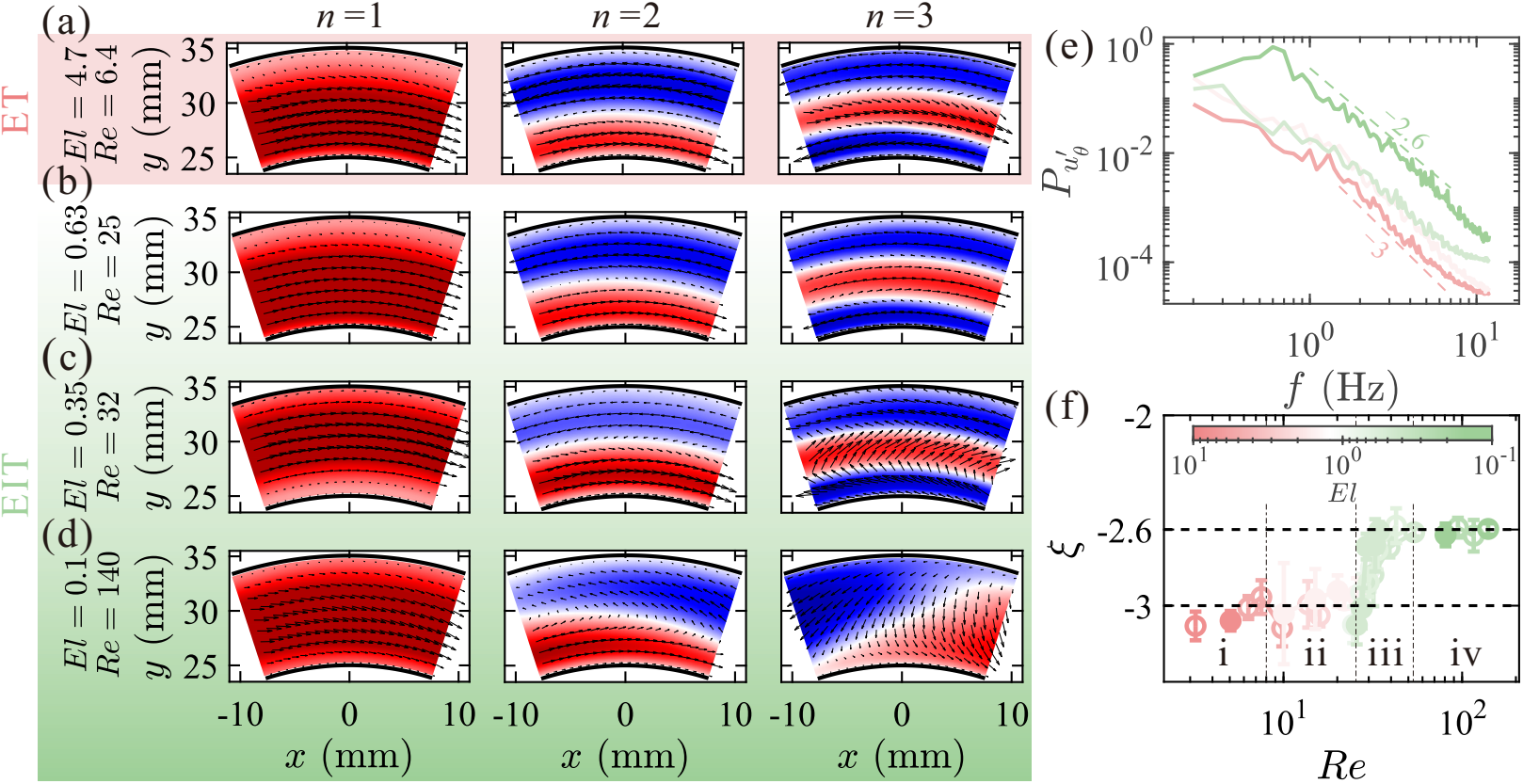Viscoelastic fluids are ubiquitous in daily life and industrial applications, such as toothpaste, shampoo, and polymer solutions. These fluids exhibit turbulent behaviors distinctly different from Newtonian fluids. Polymers can induce two new types of turbulence: elastic turbulence (occurring when inertia is negligible) and elasto-inertial turbulence (occurring with finite inertia). The academic community has long debated whether elastic turbulence and elasto-inertial turbulence are independent or interrelated phenomena.
Recently, Professor Chao Sun's research group at Tsinghua University, in collaboration with other researchers, combined theoretical analysis and meticulous experiments to study the transition behaviors and turbulent characteristics of viscoelastic fluids with different elasticities. Their work reveals the continuous transition from elastic turbulence to elasto-inertial turbulence.

Fig. 1: The transition characteristics of viscoelastic fluids with different elasticities were systematically studied using a custom-designed and built experimental setup.
The research team utilized a self-built Taylor-Couette flow device (Figure 1) to systematically investigate the flow characteristics under different regimes by varying the elasticity of the viscoelastic fluid. By combining global torque measurements with local particle image velocimetry (PIV) techniques, they quantified the contributions of elastic stress and inertia to angular momentum transport, and obtained the flow structures and velocity power spectra for different flow regimes.

Fig. 2: As the elastic effects of the viscoelastic fluid decrease, elastic turbulence transitions smoothly and continuously to elasto-inertial turbulence.
The study found that in both elastic turbulence and elasto-inertial turbulence, elastic stress is the primary factor driving flow instability and sustaining turbulence, while inertia plays only a secondary role. Stability analysis led to the proposal of a unified function describing the continuous transition from elastic to elasto-inertial instability. Furthermore, using Proper Orthogonal Decomposition (POD) and energy spectrum analysis, it was discovered that flow field structures (such as velocity streaks and shear layers) and the energy spectrum exponent change gradually from elastic turbulence to elasto-inertial turbulence, without obvious abrupt jumps (Figure 2).
This work clarifies the connection and distinction between elastic turbulence and elasto-inertial turbulence in viscoelastic fluids, deepening the understanding of the mechanisms behind turbulence generation in non-Newtonian fluids. The proposed combined torque-velocity measurement method and stability analysis framework can be extended to other complex fluid systems, such as curved flows and flows in porous media. The research provides new insights for polymer drag reduction technology and polymer processing.
The research paper, titled "Experimental evidence for the continuous transition between elastic and elasto-inertial turbulence", was published in the Proceedings of the National Academy of Sciences (PNAS).
Postdoc Yi-Bao Zhang from the Department of Energy and Power Engineering at Tsinghua University is the first author of the paper. Professor Chao Sun from the Department of Energy and Power Engineering at Tsinghua University and Professor Heng-Dong Xi from the Institute of Extreme Mechanics and the School of Aeronautics at Northwestern Polytechnical University are the corresponding authors. Co-authors include Dr. Lu Li from the Department of Mechanics and Aerospace Engineering at Southern University of Science and Technology, Ph.D. student Yaning Fan (Class of 2023) from the Center for Combustion Energy and the Department of Energy and Power Engineering at Tsinghua University, and Dr. Jinghong Su from the College of Mechanical and Transportation Engineering at China University of Petroleum (Beijing).
This work was supported by the National Natural Science Foundation of China (NSFC) Excellence Research Group Program, the Young Scientists Fund, the New Cornerstone Science Foundation through the New Cornerstone Investigator Program, and the XPLORER PRIZE.
Editor: Li Han

